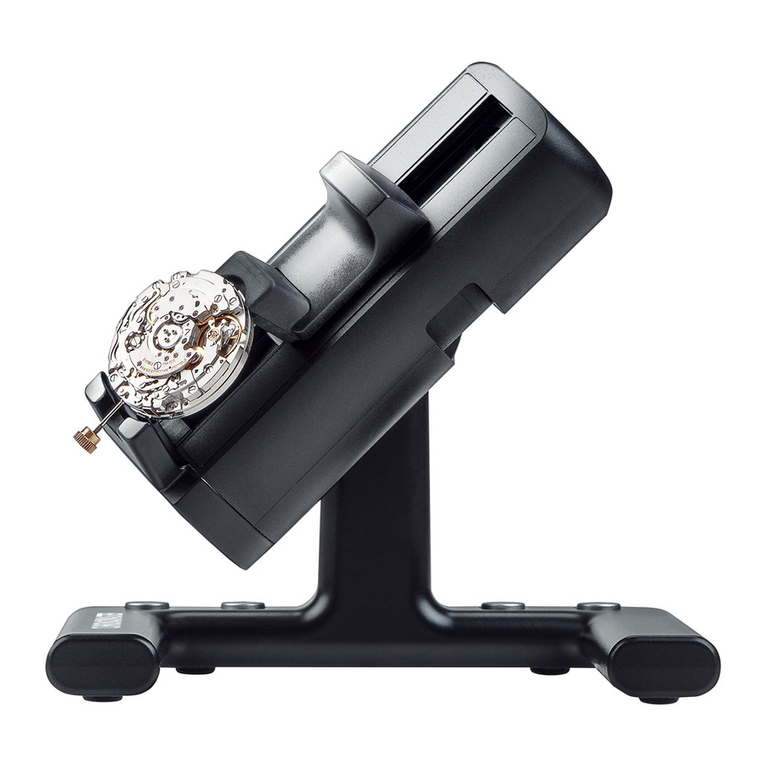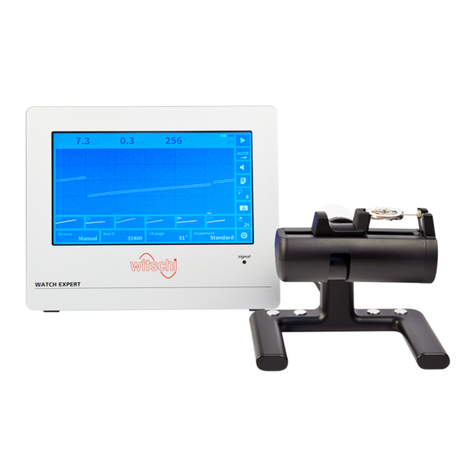Witschi Electronic Ltd Chronoscope X1 (G3) Page 3/39
CONTENTS
1SAFETY REFERENCE..................................................................................................... 5
1.1 RECYCLING ................................................................................................................... 5
2DESCRIPTION .............................................................................................................. 6
3INSTALLATION ............................................................................................................ 7
3.1 EXTEND OF DELIVERY ...................................................................................................... 7
3.2 SETTING UP THE INSTRUMENT ........................................................................................... 7
3.2.1 Mains connection .............................................................................................................7
3.3 CONNECTIONS TERMINAL X1 (G3) –MICROMAT C............................................................. 8
4OPERATING................................................................................................................. 9
4.1 TOUCH SCREEN.............................................................................................................. 9
4.2 MENU BARS AND BUTTONS ........................................................................................... 10
4.3 LATERAL TOOLBAR ....................................................................................................... 12
5DISPLAY MODES ....................................................................................................... 14
5.1 DISPLAY MODE DIAGRAM ............................................................................................. 14
5.2 TRACE DISPLAY MODE .................................................................................................. 14
5.3 VARIO DISPLAY MODE .................................................................................................. 15
5.4 SEQUENCE DISPLAY MODE ............................................................................................ 15
5.5 POLAR DISPLAY MODE.................................................................................................. 17
5.6 SCOPE DISPLAY MODE .................................................................................................. 19
5.7 INPUT OF CLIENT ADDRESS AND PIECE INFORMATIONS........................................................ 20
................................................................................................................................. 21
5.8 TIME,DATE AND MOON PHASE ...................................................................................... 21
5.9 INFORMATION ............................................................................................................. 21
................................................................................................................................. 22
5.10 EXPORT SCREEN CONTENT.............................................................................................. 22
5.11 ERROR MESSAGES ........................................................................................................ 22
6DISPLAY/EDIT MEASUREMENT PROGRAMS ............................................................... 24
6.1 TAB PROGRAM ............................................................................................................ 25
6.2 TAB DIAGRAM............................................................................................................. 26
6.3 TAB TRACE AND VARIO ................................................................................................. 26
6.4 TAB SEQUENCE............................................................................................................ 27
6.5 TAB POLAR ................................................................................................................. 27
6.6 TAB TOLERANCES......................................................................................................... 28
7SYSTEM PARAMETERS .............................................................................................. 29
7.1 TAB SYSTEM................................................................................................................ 29
7.2 TAB TIME ................................................................................................................... 31
7.3 TAB PROGRAM ............................................................................................................ 32
7.4 TAB SECURITY ............................................................................................................. 32
7.5 TAB MEASUREMENT ..................................................................................................... 33
7.6 REITER DIAGRAMM ...................................................................................................... 33
7.7 TAB TRACE /VARIO...................................................................................................... 34































